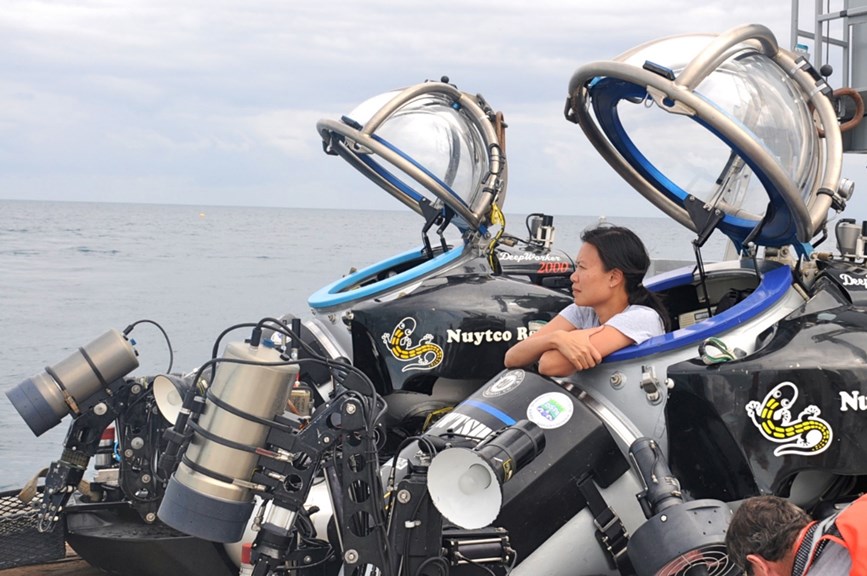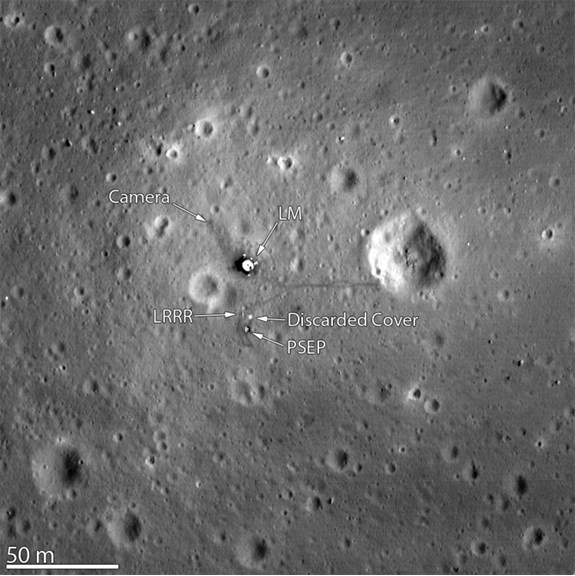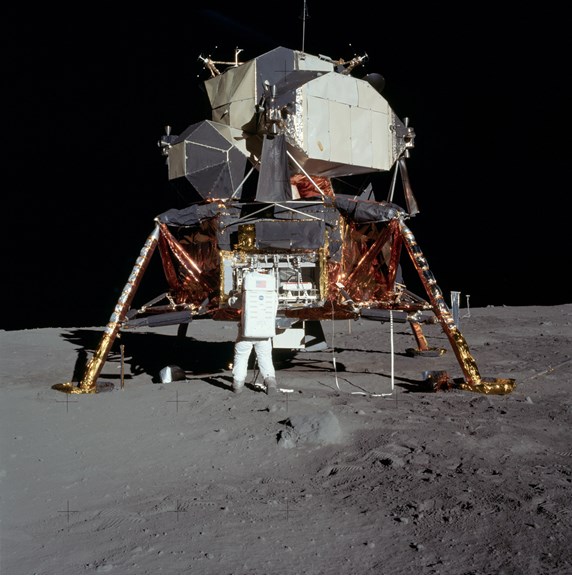Skynotes: August 2019
Month highlights
Milky Way is a rich broad arc across the entire sky this month with the Clouds of Magellan high in the south. Antares, Jupiter and Saturn lie close in the east. A gibbous moon descends nightly through the area during the first half of August occulting Saturn on 12th from many latitudes in Australia, although not Victoria.
Planetarium events
Planetarium Nights | Friday 2, 9, 16, 23 & 30 August
Evenings for adults
7.30pm – Black Holes: Journey into the Unknown + What's in the Sky Tonight
9.00pm – Waiting Far Away + Space Opera
National Science Week
Frontiers of Science: Mars & Beyond | Monday 12 August
Join NASA exobiologist Dr Darlene Lim for an illuminating experience about science in extreme environments. Hear about how exploring extreme environments on Earth can give us insights into conditions that human explorers might face on Mars or other planets.
Particle/Wave | Saturday 17 August
Particle/Wave sees poets, musicians, sound and video artists joining forces with renowned scientists to interpret the theories of gravitational waves, which Stephen Hawking has called "a completely new way of looking at the universe." Recently screened during the Melbourne International Arts Festival to critical acclaim and sold out audiences, Particle/Wave returns for National Science Week, alongside a snapshot and Q&A on Gravitational Waves.
Melbourne sun times
| Date | Rise / Set times (daylight) |
|---|---|
| Thursday 1st | 7:21am / 5:32pm (10:11 hrs) |
| Sunday 11th | 7:10am / 5:40pm (10:30 hrs) |
| Wednesday 21st | 6:58am / 5:49pm (10:50 hrs) |
| Saturday 31st | 6:44am / 5:57pm (11:13 hrs) |
Moon phases
| Phase | Date |
|---|---|
| New Moon | Thursday 1st |
| First Quarter | Thursday 8th |
| Full Moon | Thursday 15th |
| Last Quarter | Saturday 24th |
| New Moon | Friday 30th |
The Moon will be at perigee (closest to Earth) on Fri 2nd at a distance of 359,398 km, and at apogee (furthest from Earth) on Sat 17th at 406,244 km.
Planets
Mercury is hard to see this month as it rises in the east shortly before sunrise.
Venus is not visible this month as it is too close to the sun.
Mars is lost in western twilight this month but will return in the eastern dawn sky in November.
Jupiter has been in retrograde motion (as seen from Earth) but on the 8th it stops and resumes its normal prograde or eastward movement. It is high in the east after sunset very close to the red giant star Antares in Scorpius.
Saturn, which has a distinctive faint yellow glow, continues its retrograde motion this month. It appears in the east at sunset just below the handle to the ‘Teapot’, or bow and arrow of the centaur-archer Sagittarius.
Meteors
The major meteor shower this month is the Perseids which peaks on the 13-14th. This is a strong Northern Hemisphere shower with around 100 meteors predicted per hour. The shower resides within the northern constellation of Perseus and is difficult to view from the southern hemisphere. However, at the peak of the shower, it has been known for long-pathed Perseids to be seen here. Perseids are fast, bright and frequently leave persistent trails. They appear to come from a point below the north-east horizon. This shower is associated with Comet Swift-Tuttle, which passed near the Sun in 1991.
Stars and constellations
Crux, or the Southern Cross, is high in the south-west. On a clear, moonless night it may be possible to see the Coal Sack nebula, a dark region that lies between the two brightest stars of the Southern Cross, known as Alpha and Beta Crucis.
Low in the southern sky are the bright stars Achernar (to the east) and Canopus (to the west). These stars lie opposite the Southern Cross and never disappear below the horizon.
High in the east after sunset and moving overhead during the night is spectacular Scorpius with its red giant star Antares, followed by Sagittarius (or the ‘Teapot’).
International Space Station
ISS orbits every 90 minutes at an average distance of 400 km appearing like a bright star moving slowly across the night sky. Here are some of the brightest passes expected this month over Melbourne and Central Victoria:
Sun 11th 6:34-6:41am SouthWest to NorthEast
Wed 14rd 5:45-5:49am West to NorthEast
Thu 22nd 6:59-7:04pm NorthWest to SouthEast (evening)
For predictions go to the Heaven's Above website.
On this day
3rd 2004, the MESSENGER (USA) mission to Mercury was launched.
4th 2007, Phoenix (USA) Mars lander was launched.
5th 1998, NASA Near Earth Object Program is created to detect and catalogue asteroids that approach Earth.
5th 1939, first person to walk on the moon, American Neil Armstrong, is born.
6th 2012, the Mars rover Curiosity lands on the red planet.
6th 1996, a meteorite from Mars discovered in Antarctica is said by NASA to contain possible microfossils of bacteria.
7th 1959, Discoverer 1 (USA) returns the first satellite images of the Earth.
10th 1675, Royal Greenwich Observatory is established east of London.
10th 1990, Magellan (USA) arrives at Venus and begins radar mapping of its surface.
12th 1877, Astronomer Asaph Hall at the US Naval Observatory discovers Mars’ 12.6km diameter moon Deimos.
13th 1898, Eros, the first near-Earth asteroid is found by Carl Gustav Witt.
17th 1970, Soviet probe Venera 7 is launched to Venus and will send first pictures from the surface of another planet after landing on December 15th.
18th 1877, Mars’ 22.5km diameter moon Phobos is discovered by Asaph Hall.
18th 1868, new element ‘helium’ is found by Pierre Janssen from analysis of the Sun’s spectrum. It is now known to be the second most abundant element in the universe after hydrogen.
19th 1960, two dogs, Belka and Strelka, are launched aboard Sputnik 5 (USSR), and successfully returned to Earth.
19th 1646, birth first Astronomer Royal John Flamsteed who catalogued 3000 starts.
20th 1975, launch of Viking 1 (USA), first probe to land on and study Mars.
20th 1977, Voyager 2 (USA) launched to the planets of the outer Solar System.
22th 1989, Voyager 2 (USA) discovers positive evidence for Neptune’s rings.
24th 2006, first formal definition of ‘planet’ is debated and vote upon by International Astronomical Union in Prague resulting in dwarf planet status for Pluto.
25th 1609, Galileo demonstrates to the Venetian Doge and officials his improved version of the newly invented telescope.
31th 1913, birth of famous British radio-astronomer Bernard Lovell.
Moon landing: a postscript
In 2012, 43 years after Apollo 11’s historic mission to the moon, NASA’s Lunar Reconnaissance Orbiter (LRO) imaged its landing site from 24 km above the surface in such detail that the Lunar Module Eagle’s descent stage, scientific instruments laser reflector (LRRR) and seismic experiment (PSEP), tv camera, and even the astronauts’ foot tracks can be clearly seen, including a walk to Little West crater seen on the right.
To view Tranquility Base and all five later Apollo landing sites go to:
Resource: Apollo 11 Landing Site (nasa.gov, June 2019)
Apollo 11: 'A Stark Beauty All Its Own' (nasa.gov, March 2012)
NASA Spacecraft Images Offer Sharper Views of Apollo Landing Sites (nasa.gov, September 2011)


